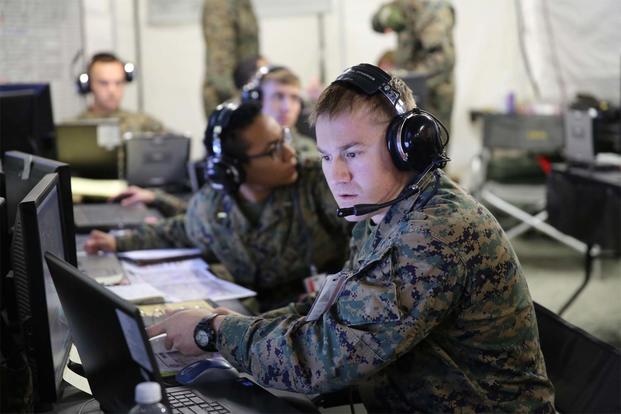It's not quite the 36 infantry battalions that President Donald Trump has cited, but the Marine Corps is asking Congress for its biggest force increase in nearly a decade.
The assistant commandant of the Marine Corps, Gen. Glenn Walters, asked lawmakers Wednesday for 194,000 troops -- a 12,000-Marine increase from the current force strength of 182,000. That number's not a ceiling for the Corps, he said, but a starting point.
"We have done 18 months' worth of analysis on what capabilities we need," he told members of the Senate Armed Services Committee's subcommittee on readiness. "Before we built another capacity, we need to fix the holes in our current organizations. That's a smaller number, 194,000."
This figure includes an additional 3,000 troops the Corps expects to receive this fiscal year, thanks to a provision in the 2017 National Defense Authorization Act. But the money for those troops can't be spent until Congress passes an appropriations bill, which lawmakers are set to debate between now and April.
The Marine Corps just completed a multi-year drawdown process beginning in 2011 to bring it from a peak force strength of 202,000 during the troop surge in Afghanistan to the current 182,000 end strength, cutting infantry battalions and support elements. Amid sequestration cuts and budget austerity, some leaders warned the service might be forced to draw down as low as 175,000.
Now, with the prospect of funding to grow the force, Walters said specialized communities and capabilities would get attention first.
"Cyber, information operations, [intelligence, surveillance, and reconnaissance], counter-UAS, and long-range fires," he told Military.com in an interview after the hearing. "So these are the capabilities we're trying to buy that we lack right now."
The Corps, he said, is building what he called the MEF information group, a Marine Expeditionary Force element that would incorporate all these capabilities. This development comes as the service also adds a new three-star general position, a deputy commandant for information environment operations, to serve as an advocate to leadership for these roles.
"The way we're going to fight in the future and the way the enemy's going to fight in the future, we have to push those [capabilities] down to the lower echelons," Walters said.
Of the 12,000 troops the Corps hopes to add, the only Marines in traditional ground combat positions will be artillery troops adding long-range fires capabilities, including the High Mobility Artillery Rocket System, or HIMARS, Walters said. While other Marines in the prospective plus-up might serve in infantry units, they won't be riflemen, he said.
That doesn't mean the Corps is giving up on adding more infantry battalions, but Walters said it's prioritizing what it sees as pressing capability gaps.
"Once you get past that [194,000] number is when you start, if you ever grew past that, would be adding more capacity ... to reduce the [deployment]-to-dwell ratio," he said.
-- Hope Hodge Seck can be reached at hope.seck@military.com. Follow her on Twitter at@HopeSeck.



























